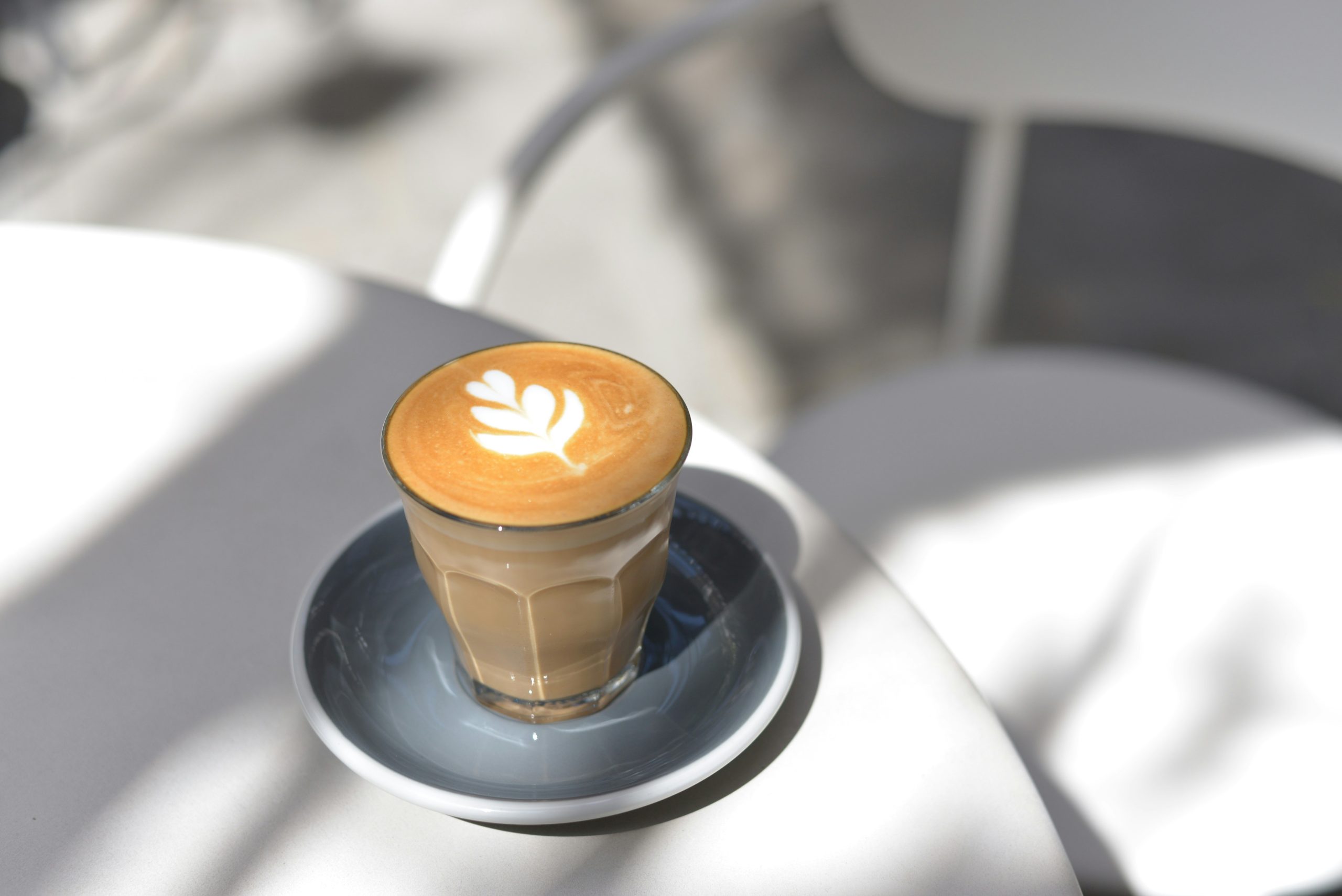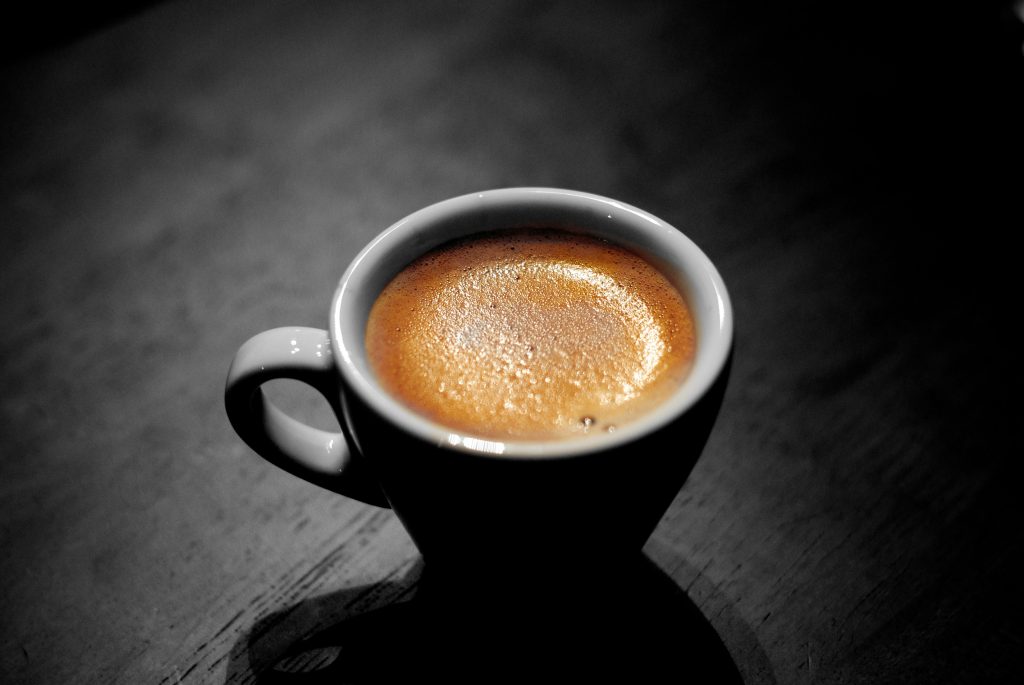What Is The Difference Between Espresso And Regular Coffee?

If you’ve ever wondered about the distinction between espresso and regular coffee, you’re not alone. Despite both being derived from coffee beans, these two beverages have unique characteristics that set them apart. While regular coffee is typically brewed using a longer extraction process, resulting in a larger volume of liquid, espresso is created by forcing hot water through a compacted puck of finely ground coffee beans using an espresso machine. This results in a strong and concentrated shot of coffee that is often consumed as a base for various espresso-based drinks. In this article, we will explore the differences between these two popular caffeinated beverages and uncover what makes them distinct from each other.
Coffee Bean Type
Arabica
Arabica coffee beans are known for their superior quality and are often considered the gold standard in the coffee industry. These beans come from the Coffea arabica plant and are renowned for their delicate and nuanced flavors. Arabica beans are grown at higher altitudes and in cooler climates, which results in a slower maturation process and more complex flavors. The taste profile of Arabica coffee can vary greatly depending on the specific origin and roasting process, but it often includes notes of fruitiness, sweetness, and acidity.
Robusta
Robusta coffee beans, on the other hand, are generally considered to be the less desirable sibling of Arabica beans. These beans come from the Coffea canephora plant and are typically grown at lower altitudes in warmer climates. Robusta beans have a higher caffeine content and tend to be more bitter and harsher in flavor compared to Arabica. However, they also offer a stronger and more robust flavor profile, making them well-suited for blends or espresso-based drinks that require a bold and intense taste.
Roasting Process
Light Roast
Lightly roasted coffee beans are pale in color and have a mild flavor profile. These beans are roasted at lower temperatures for a shorter duration, allowing them to retain many of their original characteristics. Light roast coffee tends to have a higher acidity level, brighter flavors, and floral or fruity notes. It is ideal for those who prefer a more delicate and nuanced taste experience.
Medium Roast
Medium roasted coffee beans strike a balance between the bright acidity of light roast and the richer flavors of dark roast. The beans are roasted at slightly higher temperatures, resulting in a richer and more caramelized flavor profile. Medium roast coffee has a well-rounded taste with a good balance of acidity and sweetness. It is a popular choice for those who enjoy a balanced cup of coffee with pronounced flavors and a smooth finish.
Dark Roast
Dark roast coffee is characterized by its deep, dark brown color and bold flavor profile. The beans are roasted at higher temperatures for a longer duration, which causes the sugars within the beans to caramelize and the oils to rise to the surface. This roasting process gives dark roast coffee a smoky, intense flavor with notes of chocolate, nuts, and even a hint of bitterness. Dark roast coffee is often associated with espresso brewing and is loved by those who prefer a strong, robust, and full-bodied cup of coffee.
Grind Size
Espresso Grind
Espresso grind is a fine and powdery texture that resembles sand. It is specially designed for brewing espresso, which requires a higher pressure extraction method. The fine grind allows for the water to pass through the coffee quickly, resulting in a concentrated and flavorful shot of espresso. The precise grind size is crucial for achieving the perfect balance between extraction time and flavor intensity when brewing espresso.
Regular Coffee Grind
Regular coffee grind refers to a coarser grind size that is better suited for brewing methods such as drip coffee makers, French presses, and pour-over brewing. The coarser grind allows for a slower extraction process, resulting in a more balanced and less intense cup of coffee. The larger surface area of the coarser coffee grounds allows for a more gradual release of flavor compounds, resulting in a milder and well-rounded taste experience.
Brewing Method
Espresso Machine
An espresso machine is a specialized coffee brewing device that utilizes high pressure and hot water to extract the flavors and aromas from finely ground coffee. This brewing method produces a small, concentrated shot of coffee known as espresso. Espresso machines provide the ability to control various parameters such as water temperature, pressure, and extraction time, allowing for the customization of flavor profiles. The resulting espresso is often enjoyed as a standalone shot or used as a base for various espresso-based drinks.
Coffee Maker
A coffee maker, also known as a drip coffee maker or coffee machine, is a popular brewing method for regular coffee. This automated device uses gravity to drip hot water over a bed of ground coffee in a filter. The water gradually extracts the flavors and oils from the coffee, producing a larger quantity of brewed coffee compared to espresso. Coffee makers are known for their convenience and simplicity, allowing users to enjoy a fresh and flavorful cup of coffee without much effort.
Brewing Time
Quick Brewing
Quick brewing methods, such as espresso, typically involve a shorter extraction time. Espresso is brewed within seconds, as the high pressure forces hot water through the coffee grounds at a rapid pace. This quick brewing process allows for the extraction of concentrated flavors, resulting in a strong and intense cup of coffee. Quick brewing methods are often preferred by individuals who are looking for a quick caffeine fix or enjoy the bold and robust taste of espresso.
Slow Brewing
Slow brewing methods, such as drip coffee or French press, involve a longer extraction time. The water is in contact with the coffee grounds for a longer duration, allowing for a more gradual release of flavors and aromas. Slow brewing methods are known for producing a milder and well-balanced cup of coffee. They are favored by those who appreciate the process of brewing coffee, as well as individuals who prefer a smoother and less concentrated taste profile.
Concentration
Higher Concentration
Higher concentration refers to a stronger, more intense flavor profile in coffee. This can be achieved through various factors such as using a higher coffee-to-water ratio, brewing methods like espresso, or using darker roast coffee beans. Coffee with a higher concentration often has a bolder and more pronounced taste, which can be enjoyed by individuals who prefer a robust and impactful coffee experience.
Lower Concentration
Lower concentration refers to a milder, less intense flavor profile in coffee. This can be achieved through factors such as using a lower coffee-to-water ratio, brewing methods like drip coffee, or using lighter roast coffee beans. Coffee with a lower concentration often has a more subtle and delicate taste, suitable for those who enjoy a smoother and more balanced cup of coffee.
Caffeine Content
Higher Caffeine Content
Coffee with a higher caffeine content typically comes from Robusta beans, as they naturally contain a higher concentration of caffeine compared to Arabica beans. Additionally, a darker roast tends to have slightly less caffeine than a lighter roast due to the breakdown of caffeine during the roasting process. For those seeking a stronger caffeine kick, selecting coffee with higher caffeine content or using brewing methods like espresso can provide the desired boost.
Lower Caffeine Content
Coffee with a lower caffeine content is often associated with Arabica beans and lighter roast profiles. Arabica beans naturally contain less caffeine than Robusta beans, making them a popular choice for those who are more sensitive to caffeine or prefer a milder coffee experience. Lighter roasts also tend to retain more caffeine, as the longer roasting time of dark roasts can decrease the caffeine content slightly.
Taste Profile
Rich and Bold
Coffee with a rich and bold taste profile is often associated with darker roast profiles and beans from the Robusta variety. The intense flavors of dark roast coffee include a smoky and bitter taste, with notes of chocolate and nuts. This taste profile is favored by individuals who enjoy a strong and powerful coffee experience, as the bold flavors leave a lasting impression on the palate.
Milder and Balanced
Coffee with a milder and balanced taste profile is often associated with lighter roast profiles and beans from the Arabica variety. Lighter roasts result in a more nuanced and well-balanced cup of coffee, with lively acidity, vibrant fruitiness, and subtle sweetness. This taste profile is favored by individuals who appreciate the delicate flavors and complexities found in Arabica coffee, providing a more gentle and enjoyable coffee experience.
Serving Size
Smaller Serving Size
Smaller serving sizes are typically associated with espresso shots, which are typically served in small demitasse cups. Espresso shots are concentrated and provide a quick burst of caffeine and flavor. The smaller serving size allows for a more concentrated and intense coffee experience, often enjoyed in one or two sips.
Larger Serving Size
Larger serving sizes are often associated with regular coffee, which is brewed in larger quantities using methods like drip coffee or French press. Regular coffee is typically poured into mugs or cups and enjoyed over a more extended period. The larger serving size allows for a more prolonged and leisurely coffee experience, perfect for savoring the flavors and aromas of a well-brewed cup of coffee.

Popular Drinks
Espresso Shot
An espresso shot is a concentrated form of coffee made by forcing hot water through finely ground coffee under high pressure. It is the foundation for various other espresso-based drinks and is beloved by coffee enthusiasts worldwide. Espresso shots are characterized by their strong and intense flavor profile, with a pleasantly thick crema on top.
Cappuccino
Cappuccino is a classic espresso-based drink that combines equal parts of espresso, steamed milk, and milk foam. The rich and bold flavors of the espresso blend harmoniously with the creamy and velvety texture of the milk. Cappuccinos are often enjoyed in larger, ceramic cups, providing a perfect balance of coffee and milk.
Drip Coffee
Drip coffee, also known as filtered coffee or pour-over coffee, is made by slowly pouring hot water over a bed of ground coffee in a filter. This brewing method allows for a more even extraction of flavors, resulting in a well-rounded and balanced cup of coffee. Drip coffee is typically served in mugs and can be enjoyed black or with milk and sugar.
Americano
An Americano is a popular espresso-based drink that combines a shot or two of espresso with hot water. This creates a milder and more diluted coffee beverage that resembles regular brewed coffee. Americanos are often enjoyed as an alternative to drip coffee, providing a smooth and flavorful cup of coffee with a hint of espresso richness.
In conclusion, the difference between espresso and regular coffee lies in various factors such as the coffee bean type, roasting process, grind size, brewing method, brewing time, concentration, caffeine content, taste profile, serving size, and the popular drinks they can create. By understanding these differences, you can make informed decisions when selecting your preferred coffee and tailor your brewing methods to suit your taste preferences. Whether you enjoy the boldness and intensity of espresso or the milder and balanced flavors of regular coffee, there is a coffee experience out there waiting for you to savor it. So sit back, relax, and enjoy your cup of coffee, knowing that you’ve discovered the unique characteristics that make it truly special. Cheers!
